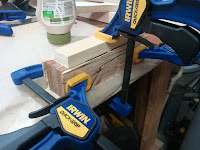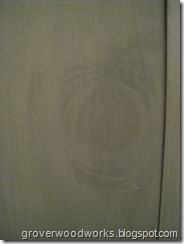This past weekend I had the opportunity to do some work for a friend. This friend has a house on a lake that needed some repair work done to a couple of exterior doors. After many years of weather some of the wood finally started rotting.
First of all this was my view at 7:30am Saturday morning……


I have to tell you it doesn’t get much better than this. I have always been a lake guy even though I have never spent a ton of time on them and I love boats, so this view pretty much made my day. I had to keep reminding myself that I am there to work not watch the boats go by. So anyway… To the work part of this…..
Take a look at the shots of the rot --

This is one of the doors. This one was the difficult one. The one that scared me, the one that had me thinking for a few minutes what the heck did I get myself into, however after stepping back cooler heads prevailed.

This one looks pretty bad but it was actually really easy to fix, so lets start here.
This is on a single open French door so this is the bulkhead between the door that opens and the static window/door. The first thing we did was figure out how to separate the rotted board from the rest of the door or if we would have to build a patch. We were able to find the seam and start to separate the bulkhead.

A little prying and she came right off. You have to make sure not to pry to hard and damage the other side of the door. Just take your time and go slowly.


I trimmed a board that was the same width of the bulkhead. I just used a miter saw to cut it to size.
I attached the board using some finish nails. I set the nails just below the surface and filled them with some caulk. Make sure to use an exterior caulk. One the board was attached I also ran a bead of caulk down the inside edge where the wood meets the door to seal any gaps, I did the same where the board meets the other part of the bulkhead. One area that you want to make sure you get some caulk into is at the location of the original rot, make sure you get plenty of caulk at the bottom of the board between the board and the metal transition plate. That way if there is ever any standing water it keeps the water from soaking into the wood as much as possible.


This is how that door turned out. I painted the entire door frame and doors, in addition to the new wood that was installed.
Now onto the scary door…..
So you saw the rot from above. I made some assumptions about the construction of the door that turned out not to be totally correct.
******* If my friend is reading this post please just skip this section. This totally isn’t your house… *************

Once I started the demolition of the rotted area it became apparent that the door was not built as we thought. Instead of being multiple pieces the door was a single piece or it was glued together so well that we would have destroyed the entire door trying to go the original route of removing the rotted piece. Instead of being able to just pry the piece off like the other door I ended up having to cut this section out. There was more rotted wood than what you could see with the eye so I cut a little bigger than the rotted wood so to make sure there was no bad wood left.
To cut this section out I used a great new tool from Dremel tools, called the Dremel Trio this was a super handy little tool.
From this point I started rebuilding the frame. I used several pieces of wood to build up the thickness we needed to fill the gap.
Once I had the right thickness I was able to start test fitting the piece in the hole and fine tuning everything.

Here is what the section looked like after I got the piece built up, at this point I caulked the heck out of everything to make sure it was sealed up tightly.

After Painting caulking and painting some more here is what the door looks like now. What rotted wood and hole are you talking about. I don’t remember any rotted wood or a large gaping hole in the door.
So here is the whole area all cleaned up and doors repaired and repainted. I think it turned out pretty well.

I know it looked scary at first but keep in mind there are very few things that cannot be fixed and usually they are pretty simple once you step back and take a look and think things through.
Have a Great Day!











































